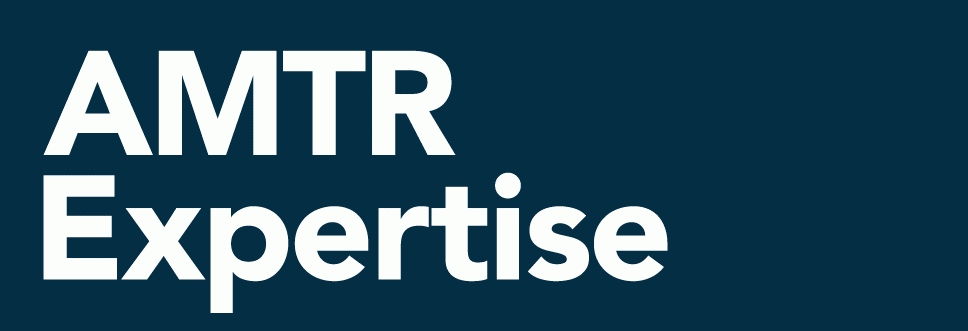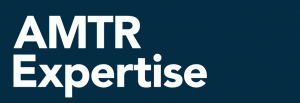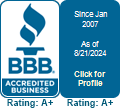Union Pacific Railroad is the latest Class I to adopt precision scheduled railroad service with its Unified Plan 2020. Lance Fritz, UP CEO, comments, “We are not meeting customer expectations. Unified Plan 2020 is our path forward to secure our place as the industry leader in safety, service and financial performance.” The plan’s key principles include shifting the focus of operations from moving trains to moving cars, working to minimize operational inefficiencies, and balancing/blending train services and movements to improve the utilization of crews and rail assets. Implementation of this new plan will begin on UP’s eastern North/South corridor between Wisconsin and Texas and is projected to be system-wide by 2020.
The cold weather and holiday shipping season are upon us and so, too, are the annual rate hikes for some accessorial and packaging fees. During FedEx Parcel’s peak holiday shipping period, shippers can expect additional handling surcharges of $3.20/package, unauthorized package charges of $150/package, and oversize charges of $27.50/package. While UPS will be charging a residential peak surcharge of $0.28/package for ground shipments, large packages will be subject to a surcharge of $26.20/package and over maximum limits packages will be subject to a surcharge of $165/package. Shippers should also look out for freeze protect fees. Carriers typically offer freeze protect service between October and April.
AMTR rail freight audits are different. We take the time to get to know our clients and their shipping routines. We dig deep into the details of the products shipped, the origin, destination, consignee, carrier…even the specific railcars used to move the freight. We approach every move with curiosity, asking questions such as: “What did this car actually do?”, “Is the rate correct?”, “Is the rate being charged reasonable?” We also ask questions about what is missing from the freight data. Even the best freight payables departments miss what AMTR audit experts can quickly identify, such as high volume lanes missing from contracts rates, contract rates that appear to be unused, and even whole classes of freight bills such as empty car movements, accessorials, and manual payments that are absent from the audit process. Let AMTR’s freight audit expertise add depth to your transportation knowledge and return overcharge monies to your bottom line.
Detention charges are an increasing factor in truck freight costs. The ELD implementation of last year allows carriers to be even more precise at recording and billing for detention time. As such, it is important to understand detention charges and their application. Detention charges can be identified in customer-specific tariff or contract pricing, a carrier’s public rules tariff or within a negotiated quote. It is common for truckload carriers to charge a flat rate per hour after the first two hours of detention. For LTL carriers, the practice varies. The start time of detention may depend on the size of the shipment, and charges will often be applied in 15 minute increments afterward. Shippers should be curious about the impacts of detention. Reducing detention time requires working with carriers, loading dock personnel, and receiving customers. Reducing detention costs requires an understanding of how those charges are applied and billed. AMTR truck freight auditors are experts in detention charges—let us help ensure your charges are correct!
Curiosity is a well-researched human attribute that is getting a lot of attention in business circles lately. The Oxford Dictionary defines curiosity as “a strong desire to know or learn something.” The most recent issue of Harvard Business Review featured a sequence of articles on the topic. One of those articles focused on the benefits of hiring curious employees, which is especially relevant for our company and our business of auditing. We look for this trait in future employees and have found, similar to what is discussed in research, that our most successful auditors are curious by nature. At AMTR, curiosity fuels our audits. This human trait, combined with audit skill and knowledge makes SMART Auditing® possible. Our inquisitive auditors are always on the lookout for freight cost errors and are eager to investigate the complex scenarios that generate them. Not only does this allow for overcharges to be returned to our clients, but also lessons about what issues caused the errors in the first place. Don’t be satisfied with automated audit solutions that can only address the simplest of situations—be curious about what AMTR auditors can do for you!
Capacity crunch, rising rates, disruptors and changing behaviors have been noted as possible 2018 trucking industry game-changers, according to Forbes. It is evident that there are some cause and effect relationships between these trends.
The capacity crunch of 2018 has been a popular topic across recent transportation literature, webinars and conferences. The reasons for the crunch can be contributed to several different factors and continues to be a concern for shippers.
Van, flatbed and reefer spot market rates were on the rise in 2017 and have continued upward in 2018. Contract rates have also been on the rise since mid-2017, though at a steadier pace. These rate increases have been attributed to the industry preparing itself for both tight capacity and the decline in driver availability. The combination of rising rates and diesel prices means certain freight bill increases.
Regulatory changes and new technologies are often disruptors in the trucking industry. Some recent regulatory disruptors include hours-of-service changes, ELD implementation, new state-implemented toll charges that are applicable to cargo-carrying vehicles, implementation of the Food Modernization Safety Act (2016), and the recognition of smart contracts as legal instruments in a few states. Technologies that have been identified as disruptors include IoT devices used for monitoring and tracking, new software that allows easier contracting for freight, and even new ‘sharing’ apps, such as those offered by Uber Freight, Convoy and Amazon, that allow a quick connection between available carrier capacity and
ready-to-ship freight.
These trends are all converging to drive a fourth trend—changing behaviors. As rates have steadily increased, carriers have become more selective in choosing shippers with whom they work. Alternatively, shippers are working hard to increase their appeal to carriers by reducing pickup and delivery delays, improving treatment of drivers, and paying freight invoices in a more timely manner.
No matter the trend, carriers want to operate in a safe environment, shippers want freight delivered on time, and all parties want to be paid or billed correctly. AMTR helps shippers navigate industry changes, whatever they may be, by ensuring freight overcharges are not an unintended consequence.
AMTR rail expert, Genie Grooms, took the opportunity to speak to Surface Transportation Board (STB) representatives at the recent National Association of Rail Shippers conference to express shipper concerns from the AMTR vantage point. The issues she discussed included: 1) customer service as it applies to invoicing and correcting freight bills, 2) placing shippers on credit hold for refunds (although prepaid terms remain unchanged), and 3) rate reasonableness with respect to newly published mileage scale rates that have seen drastic increases. These are concerns that seem to be plaguing many shippers without any immediate remedy by carriers. AMTR was impressed at the STB representatives’ willingness to listen and their genuine desire for feedback. We encourage shippers to take advantage of any similar opportunities when presented. The STB can help address shippers’ key concerns, but only if it is made aware of them.

In May, members of AMTR attended the first-ever Transparency18 conference put on by FreightWaves and sponsored by the Blockchain in Transport Alliance (BiTA) and Georgia Tech. As the conference focus was blockchain technology, AMTR sent a multi-disciplined team to learn and get involved. Since AMTR’s audit work is focused at a unique intersection between shippers and carriers, we feel it is very important to be part of the evolution of this technology in the transportation industry. Niki Bolton (Truck Audits Manager) and Jim Sacrey (CTO) have since joined the BiTA Finance & Business Administration Think Tank where they will focus on smart contract applications, usable data structures, and the flow of freight billing, payment and auditing. The mission of the Think Tank is to create informative white papers regarding use cases and needs for blockchain, as well as to create prototype solutions, all with a focus on evolving transportation industry standards for blockchain.
AMTR has been on the road again, traveling to conferences across the U.S. One of our recent stops was at NITL2018 (National Industrial Transportation League), held in Dallas, Texas. At the conference, there was significant focus on trucking industry issues.
One of the biggest themes was capacity. Whether it was hours-of-service regulations (which are limiting driver times), the lack of truck parking availability (which is forcing drivers to stop short of their hours of available drive time), driver detention (which is reducing drive time due to loading and unloading delays), or delivery demands (more trucks making longer final-mile deliveries to residences), the impacts are generating a capacity crunch, which is of great concern to the industry and shippers alike.
Another hot topic was the Electronic Logging Device (ELD) mandate. A reflection on the European ELD implementation revealed a 16.6% reduction in miles driven, which is a significant impact. Furthermore, there is a concern about the cost of the ELD mandate, as well as the unintended impact on driver retention. If trucking companies cannot comply with the ELD mandate due to cost or other factors, they may be forced out of business.
Rising operational costs for carriers were also well-discussed. Besides complying with mandates such as ELD, the decaying state of highway infrastructure was highlighted as another considerable cost factor. As infrastructure ages, carriers are seeing more costs associated with repairs for damaged tires and equipment, and longer, more expensive routes generated by impassable roads and bridges.
Understanding more about these and other significant industry issues can allow shippers to be more prepared and proactive. Actions that strategize to allow drivers more drive time—such as quicker loading and unloading scenarios, informing carriers of any special equipment or service needs, and maintaining a consistent shipping schedule—will be important. Similarly, planning ahead for the increased costs of doing business will be essential for shippers and carriers alike.
Recent months have seen a number of announcements regarding significant leadership changes in the railroad industry. To begin, Ron Batory was sworn in as the Federal Railroad Administration’s 14th administrator on February 28th. Batory has had a long career in railroading, having come most recently from his position as COO at Conrail. Another announcement involves Canadian National President and CEO Luc Jobin, who resigned amid the backlogged Canadian grain crisis and was replaced in the interim by Jean-Jacques Ruest, a 22-year veteran and former CN Executive Vice President and CMO. Canadian Pacific is also bringing in a new player to the grain market by adding Joan Hardy—formerly of Canada’s largest agri-business, Richardson International—as Vice President of Sales and Marketing. Finally, CSXT lost CEO Hunter Harrison, who passed away unexpectedly in December 2017. There is no news as to whether Jim Foote, his replacement, will be the long-term choice to lead the CSXT into the future. Foote was previously President and CEO of Bright Rail Energy, a tech company whose products allow locomotives to run on natural gas power.
In addition to leadership changes, the railroads are working hard on various technological innovations. BNSF has joined BiTA, the Blockchain in Transport Alliance, and other railroads are sure to follow. Several railroads, including BNSF and NS, have recently rolled out new customer portals driven by upgraded technology to improve daily interactions. Finally, railroads are also developing new sensor and data-gathering technology, like UP’s “Machine Vision,” that will allow the inspection and weighing of cars—among other capabilities—without human intervention, speeding up transit times.
New leadership and new technologies often drive change in organizations and processes. With regard to the railroads, those changes can be very positive, but can often lend negative direct and indirect effects to the accuracy of freight billing. Over our 30 plus years in business, AMTR has eased clients through many times of change by providing continuity of transportation and operational knowledge.








